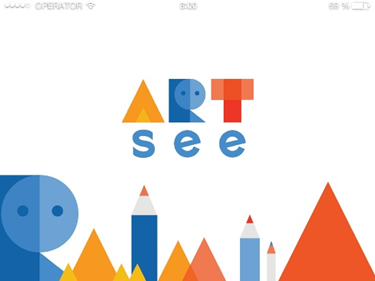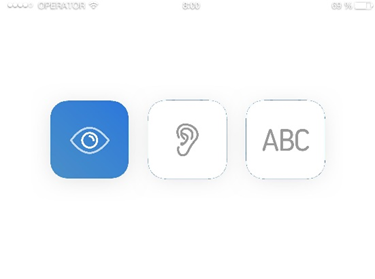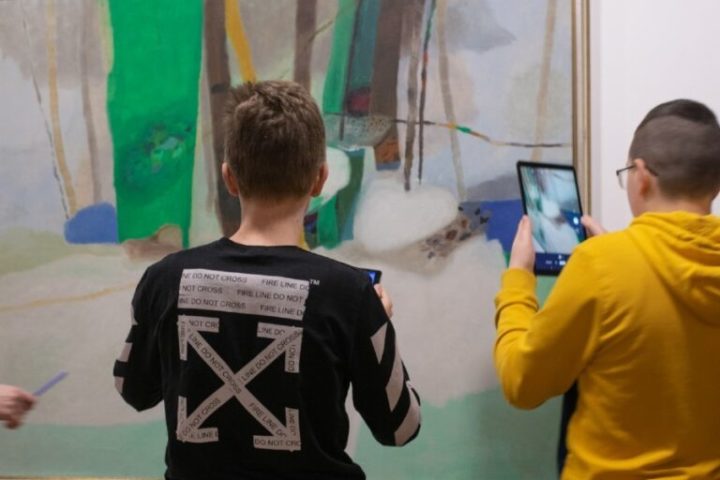
Aida Šarac
MA in History of Art, Museum Educator at National Gallery of Bosnia and Herzegovina
Museums have no borders,
they have a network
January 7, 2022
Keywords: Assistive technologies; Museum of arts; Children with developmental disabilities; Inclusion.
Inclusion is part of the social responsibility a modern museum bears as a public institution, regardless of the collection it holds. Inclusion in art museums entails the implementation of activities aiming to improve the accessibility of their collections for certain socially sensitive groups, in a physical, sensory, and cognitive manner, thus fostering audience diversification and democratisation of museum practice.
Socially sensitive groups for which a museum might implement outreach programmes and provide specific content include visitors with disabilities, the elderly, people suffering from dementia, visitors with low or no incomes, migrants, LGBTQI+ communities, etc. This article will focus on how the National Gallery of Bosnia and Herzegovina provided children with developmental disabilities with an assistive form of technology, the ARTsee app, to provide alternative interpretations of art and thus an additional reason to visit the museum.
The need for an assistive form of technology in an art museum
Listening closely to the ever-changing needs of the National Gallery of Bosnia and Herzegovina’s local community we realised that cultural and artistic content made to cater to the specific educational, emotional, communication, social, and information needs of children with Autism in Sarajevo was missing.
An alternative, collection-based educational pilot programme, ‘Blue Artism’, was therefore implemented in the National Gallery of Bosnia and Herzegovina during 2018 and 2019, establishing an appropriate methodology for children aged 10 to 14 with Autistic Spectrum Disorder. The results of research conducted in 2018 and 2019 during the implementation of the programme revealed that the participants perceive visual patterns in the form of art works in a symbolic manner, and that they often reproduce what they know instead of what they see. We took these findings as a basis to develop a digital didactic app for alternative interpretation to help children with developmental disabilities to access art.

The visual identity of the ARTsee app. ©Amra Mahmutović
The development of the app was financially supported by the Regional Goethe Institute and the Cultural Manegement Academy as part of the project Culture and Arts in Transition: The Digital Era. The team working on the app was composed of IT experts, defectologists, a designer, and the National Gallery’s Museum Educator.
An accessible application design
The creative vision of the ARTsee app project was to portray the selected works of art from the National Gallery of Bosnia and Herzegovina in the form of animations, sounds and text. The selection of the works of art to appear was based on their universal emotional and/or narrative value and a potential for being interpreted in all three aforementioned forms.
Based on these criteria, seven works of art from the Gallery’s permanent exhibition Oprostorena intima (Intimacies of Space) were selected. The designer used these works’ digital reproductions to create animations that place the artworks in a particular context (i.e. the passing of seasons) to make the interpretation easier and accessible for the children. For instance, Big Treetop by Safet Zec shows a large treetop that is animated in the application through the change of seasons. A separate sound segment evokes the movement of the wind through the treetop and leaves, through rain, snow or during a hot summer. A third separate segment of textual content describes the animation at three information levels.

Symbols leading to the content. ©Amra Mahmutović
The app was developed in two versions: a home version and an on-site version. The home version offers the target group online digital content based on works of art from the collection of the National Gallery of Bosnia and Herzegovina. Parents and caregivers download the app for free and use it together with their children by connecting the visual and audio segments and reading textual interpretations with or for them.
An on-site version of the app was created to give this group additional reasons to visit the museum. During the testing of the application in March 2020, before the outbreak of the Covid pandemic in Bosnia and Herzegovina, the museum organised additional activities for participants (students from the Mjedenica school for special education, in Sarajevo) where they used the application in the permanent exhibition Oprostorena intima. For this occasion, the museum provided participants with tablets and scannable QR codes near the painting’s captions. Each time the young visitor scans the QR code next to the painting, the app assings him a virtual star. In this way, children with developmental disabilities are motivated to further explore the exhibition space, in a playful manner.
The activity ended with a questions session led by the Museum Educator, about the contents and meanings of these works. The Museum Educator was assisted by special education teachers and students.

Young visitors with Autism interacting with the painting via ARTsee app in the context of the permanent exhibition Oprostorena intima at the National Gallery of Bosnia and Herzegovina. © Amra Mahmutović
Looking ahead
Can the ARTsee application act as a mediator between participants and original works of art? How do participants navigate the tablet and how much do they understand the functioning of the app? Do certain formal or narrative contents, colours or particular patterns of the artworks affect the participant’s psychological perception of the visual field? To explore these questions, students of psychology and pedagogy from the Faculty of Philosophy and Rehabilitation at the University of Sarajevo have developed questionnaires destined for groups of children with various forms of developmental disabilities. Unfortunately, this research was interrupted by school closures in Bosnia and Herzegovina due to Covid-19, but will continue when the health situation allows visitors to be welcomed more freely in indoor spaces, such as museums. The research will be analysed by the Gallery’s Museum Educator with the help of a mentor in special education from the Department of Pedagogy at the Faculty of Philosophy in the University of Sarajevo.
As the pandemic continues, we continue to develop content that users together with their parents and caregivers can access from their homes. We have adapted two other collections from our museum digitally: paintings by Swiss artist Ferdinand Hodler and selected paintings from the museum’s new permanent exhibition Galerija entuzijazma (Gallery of Enthusiasm). Our hope is that other art museums (locally, regionally and internationally) will join the ARTsee online platform by adapting their exhibitions to the needs of children and young people with developmental disabilities, thus increasing the accessibility of museum collections worldwide.
References:
More about the Culture and Arts in Transition: The Digital Era project, which supported the app:
https://www.goethe.de/prj/cma/en/index.html
The ARTsee app can be downloaded for free:
https://play.google.com/store/apps/details?id=ba.ugbih.artsee
